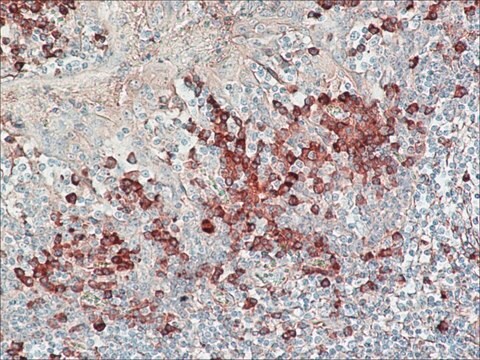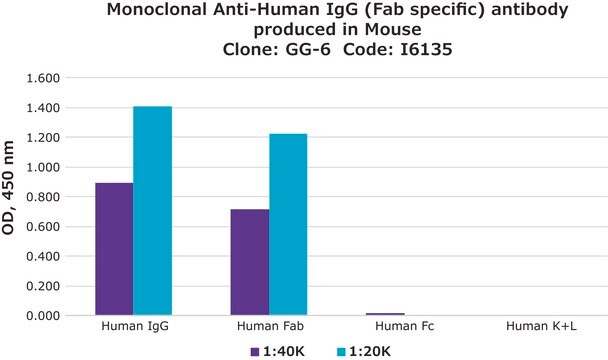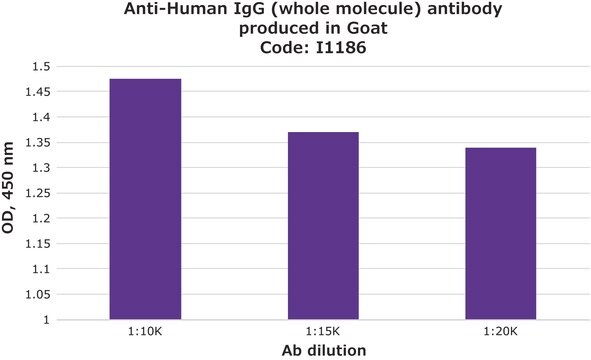Key Documents
I5260
Anti-Human IgG (Fab specific) antibody produced in goat
affinity isolated antibody, buffered aqueous solution
Synonim(y):
Fab-Specific Antibody
About This Item
Polecane produkty
pochodzenie biologiczne
goat
Poziom jakości
białko sprzężone
unconjugated
forma przeciwciała
affinity isolated antibody
rodzaj przeciwciała
secondary antibodies
klon
polyclonal
Postać
buffered aqueous solution
metody
indirect ELISA: 1:50,000
quantitative precipitin assay: 2.0 mg/mL
Warunki transportu
dry ice
temp. przechowywania
−20°C
docelowa modyfikacja potranslacyjna
unmodified
Szukasz podobnych produktów? Odwiedź Przewodnik dotyczący porównywania produktów
Opis ogólny
Specyficzność
Immunogen
Zastosowanie
- as starting material for conjugates using enzymes or fluorescent dyes
- in enzyme linked immunosorbent assay
- as a cross-linking antibody in internalisation of 125I-IgG by streptolysin-O-permeabilised cells
- as capture antibody in enzyme-linked immunosorbent assay (ELISA) for detection and semiquantitation of Fab
- in electrophoresis and immunoelectrophoresis
Działania biochem./fizjol.
Postać fizyczna
Oświadczenie o zrzeczeniu się odpowiedzialności
Nie możesz znaleźć właściwego produktu?
Wypróbuj nasz Narzędzie selektora produktów.
Kod klasy składowania
12 - Non Combustible Liquids
Klasa zagrożenia wodnego (WGK)
WGK 1
Temperatura zapłonu (°F)
Not applicable
Temperatura zapłonu (°C)
Not applicable
Certyfikaty analizy (CoA)
Poszukaj Certyfikaty analizy (CoA), wpisując numer partii/serii produktów. Numery serii i partii można znaleźć na etykiecie produktu po słowach „seria” lub „partia”.
Masz już ten produkt?
Dokumenty związane z niedawno zakupionymi produktami zostały zamieszczone w Bibliotece dokumentów.
Klienci oglądali również te produkty
Produkty
Antibody-based serology tests are useful in identifying subjects with an adaptive immune response to the SARS-CoV-2 virus. Anti-human immunoglobulin antibodies allow for quick and simple, yet reliable assays with easy readouts and can also be adapted for high-throughput screening.
Nasz zespół naukowców ma doświadczenie we wszystkich obszarach badań, w tym w naukach przyrodniczych, materiałoznawstwie, syntezie chemicznej, chromatografii, analityce i wielu innych dziedzinach.
Skontaktuj się z zespołem ds. pomocy technicznej









![Monoclonal Anti-Human IgG1 (Fab specific) [G1m(f)] antibody produced in mouse clone SG-16, ascites fluid](/deepweb/assets/sigmaaldrich/product/images/245/879/4f218cfe-aa20-409d-9449-056eba5e3d7b/640/4f218cfe-aa20-409d-9449-056eba5e3d7b.jpg)





